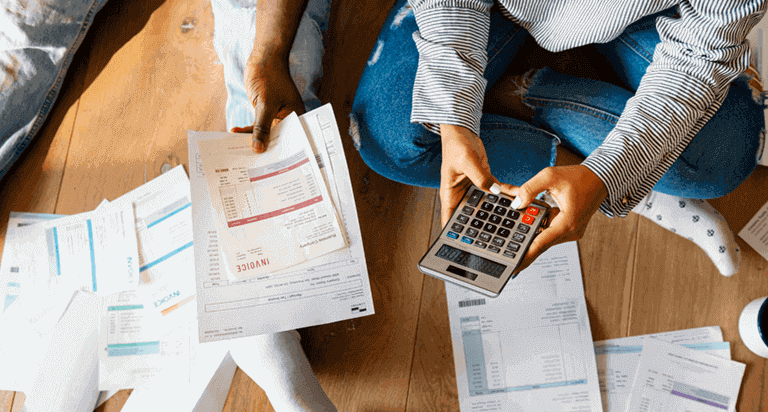Strategies for Paying Off Debt


If you have high debt and little to no savings, is it more important to sock away for the future or pay what you owe? Learn how to balance savings and debt. [Duration- 2:15]
Highlights:
- There's no single debt solution that fits every borrower's finances. The repayment method that's best for you will depend on your unique financial situation.
- The avalanche method focuses your repayment efforts on high-interest debt, while the snowball method targets your smallest debts first. Debt consolidation is another option to consider.
- Whichever repayment strategy you choose, it's important to keep up with your other financial goals while working to become debt-free.
No matter how intimidating your outstanding debt balance is, it's important to face what you owe head-on. The right repayment strategy can help you tackle debt without sacrificing important financial goals, like saving for retirement.
Learn some of the most common strategies for paying off debt, plus how to balance debt repayment alongside your other financial commitments.
Common strategies for paying off debt
There's no one-size-fits-all process for paying off debt. However, these common strategies can help you get started.
- The debt avalanche method: paying your high-interest debt first
The avalanche method focuses your repayment efforts on high-interest debt. You'll rank your debts from the highest interest rate to the lowest. Then, you'll pay the minimum each month for all of your debts but give extra focus to the one with the highest interest rate. Once your highest-interest debt has been paid off, move your attention to the debt with the next-highest interest rate and repeat the process until all of your debts have been repaid in full.
Since interest continues to accrue over time, targeting high-interest debt first helps reduce the overall cost of your debt. However, if your highest-interest debt has a large principal balance, it may take time for you to see results.
- The debt snowball method: paying your smallest debts first
The snowball method focuses your repayment efforts on your smallest debts, regardless of your interest rates. With this strategy, you'll rank what you owe from the smallest balance to the largest. Then, pay the minimum amount each month on all debts, but focus the majority of your efforts on that smallest account. Once your smallest debt has been repaid, move on to the next smallest debt and repeat the process.
The snowball method doesn't aim to minimize interest or save money over time. Instead, it leverages the psychological benefits of paying off accounts to help keep you motivated.
- The consolidation method: combining your debts to help simplify payments
Debt consolidation combines several outstanding balances into one new debt with a single monthly payment. There are many ways to consolidate debt, including a balance transfer credit card, which combines multiple credit card balances into one, or a debt consolidation loan, which allows you to pay off your old debts with a lump sum that you'll pay back over time. If you're a homeowner, you might also consolidate with a loan backed by your home equity.
Regardless of the approach you choose, the goal of consolidation is to simplify multiple debts, often owed to different lenders, into a single payment. This can make it much easier to keep track of what you owe, reducing your risk of missing payments or otherwise falling behind with lenders. Consolidation may also save you money if your new balance transfer credit card or loan has a lower interest rate than what you were previously paying.
However, be aware that consolidation often comes with fees, and it's not guaranteed that the interest rate for the new credit card or loan will be less than what you pay currently.
How to pick a debt repayment plan that works for you
There's no single repayment strategy that fits every borrower's finances. To choose your best option, you'll have to account for the types and amount of debt you have, your interest rates and terms, your monthly budget and your long-term credit and financial goals.
For example, are you juggling high-interest debt and looking to save money throughout the repayment process? If so, you might consider the avalanche method, which is one of the most cost-effective debt repayment strategies.
However, the opportunity to save money won't mean much if you can't stay focused on your goal of repayment. If you're more motivated to see debts disappear quickly, you might opt for the snowball method.
Whatever strategy you choose, the most important thing is to make repaying your debt a priority.
How to balance your finances while paying off debt
Whichever repayment method you choose, you'll also need to keep up with your ongoing financial commitments. These strategies can help.
- Create a monthly budget. A monthly budget can help you accommodate your debt payments alongside your day-to-day spending. To start, list your monthly expenses and identify each item as mandatory or discretionary.
Then, you can allocate your monthly income according to a budgeting strategy of your choice. The 50/30/20 method is a helpful starting point: 50% of your income goes to your necessary expenses (including your debt payments), 30% to discretionary expenses and 20% to savings.
- Make debt payments beyond the minimum. Making more than your required minimum payment can help you pay off debts more quickly and save money in interest charges. Earmark unanticipated funds, such as your tax return or a bonus, for debt payments. You can also find extra money in your monthly budget by reducing your discretionary spending.
- Establish an emergency savings fund. Though you may want to pay off your debts as soon as possible, it's also important to create an emergency savings fund in case an unexpected expense arises. With no emergency savings to draw on during a crisis, you may have to rely on a high-interest credit card or a personal loan to cover the costs.
To avoid compounding your debt, try to set aside between three- and six months' worth of expenses in an emergency fund in a high-interest savings account.
- Keep an eye on your credit reports and scores. It's a good idea to review your credit reports and scores regularly as you repay your debt. You can enroll in Equifax Core Credit™ for a free monthly Equifax® credit report and a free monthly VantageScore® 3.0 credit score, based on Equifax data. A VantageScore is one of many types of credit scores.
Get your free credit score today!
We get it, credit scores are important. A monthly free credit score & Equifax credit report are available with Equifax Core CreditTM. No credit card required.



